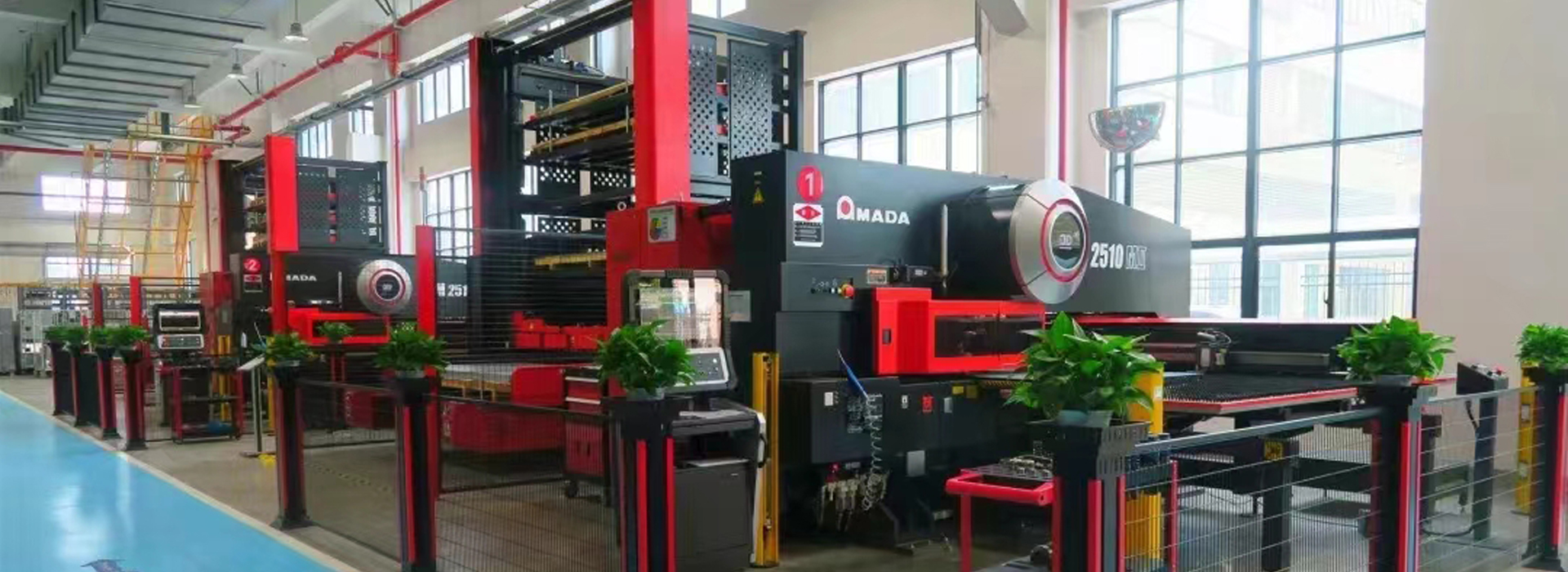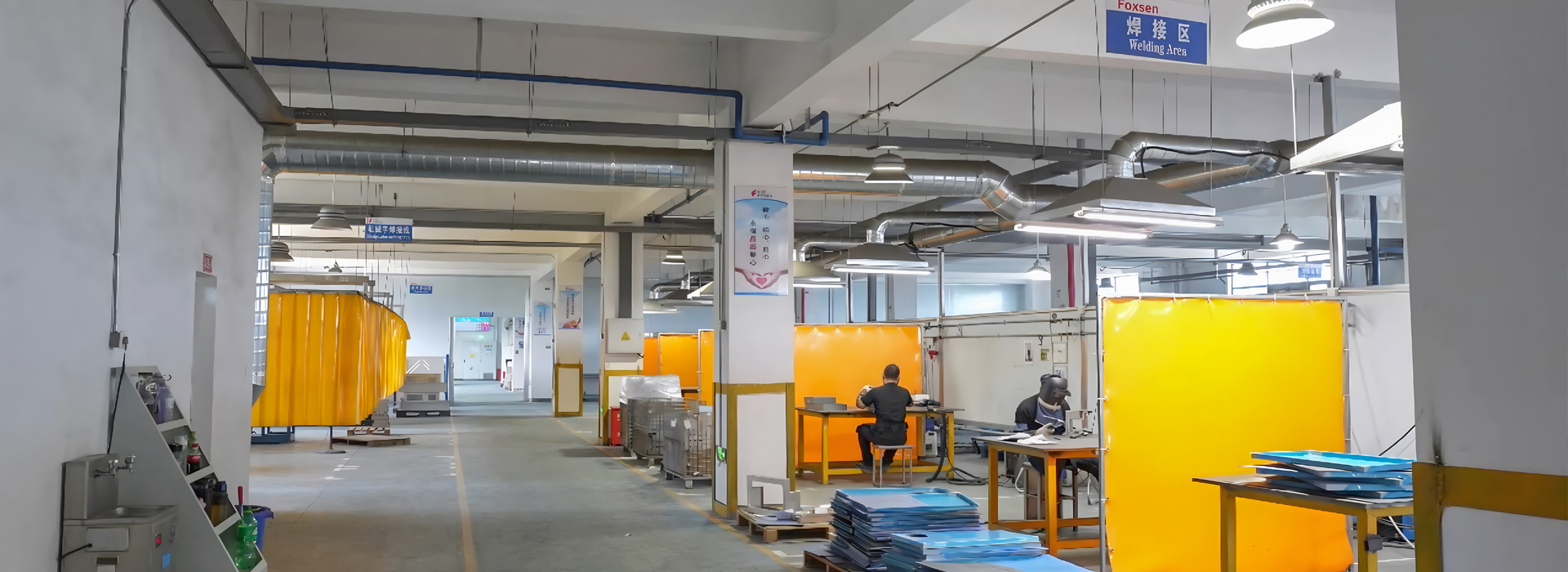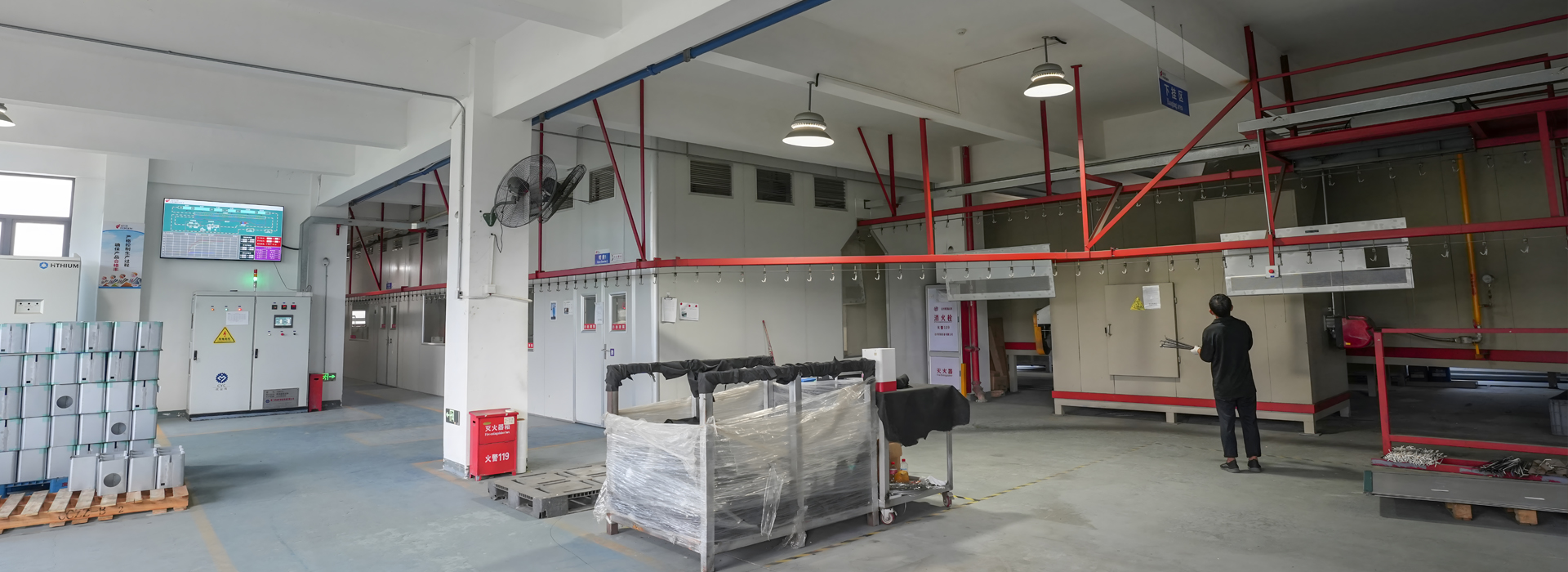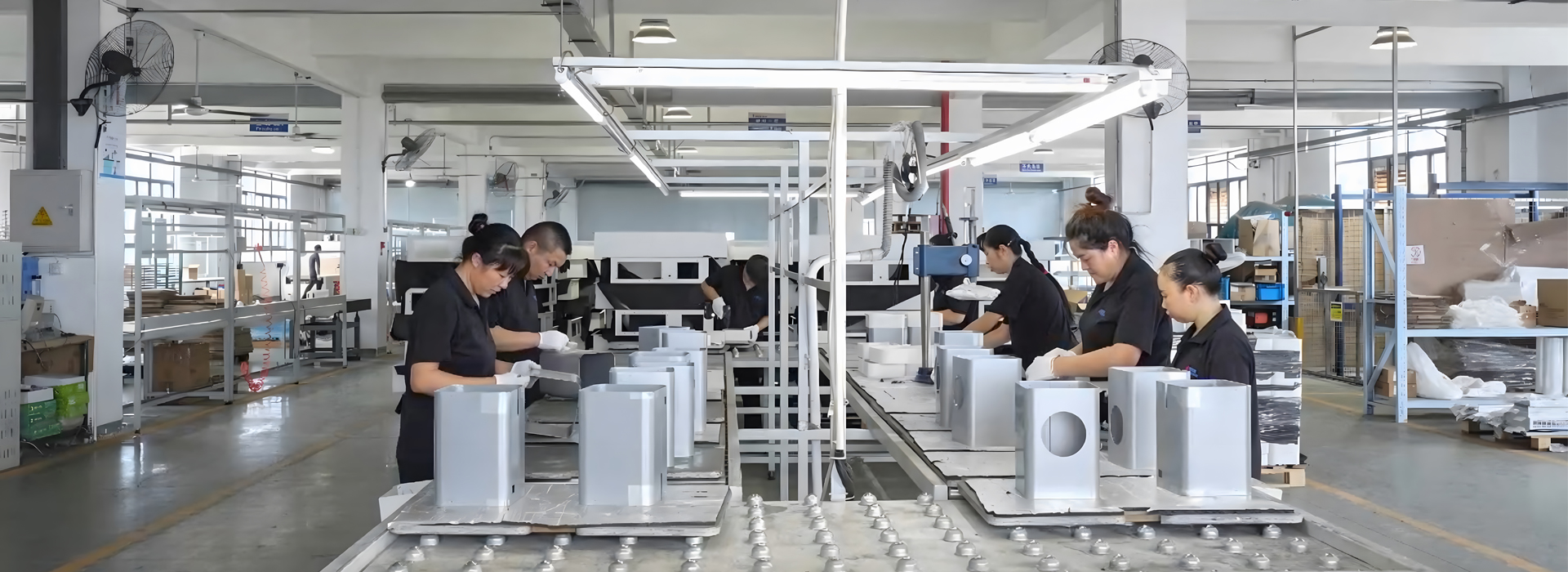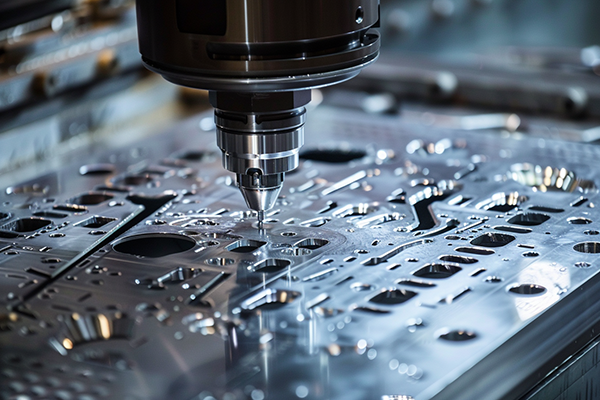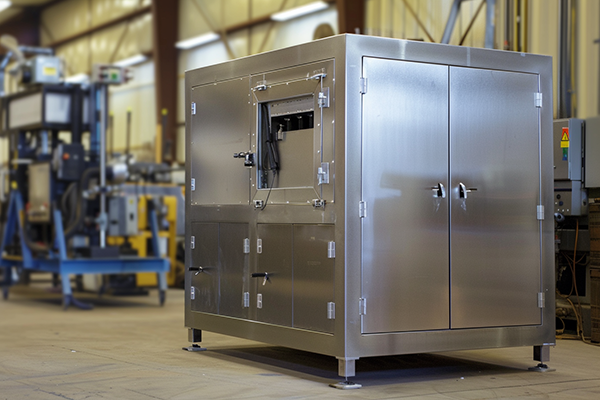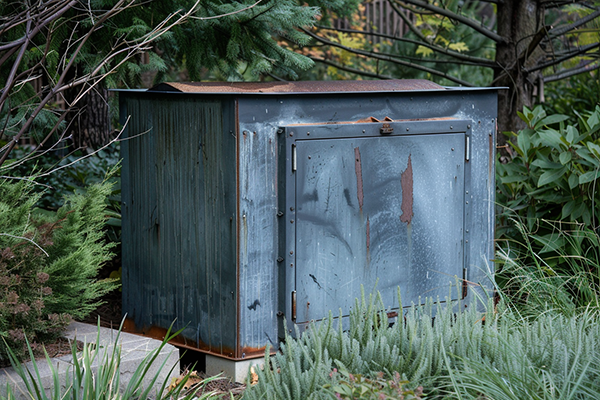
Choosing the right sheet metal outdoor equipment enclosure for your gear keeps it safe. A bad choice can cause rust, overheating, or water leaks, which may lead to expensive fixes. Strong weatherproof sheet metal outdoor equipment enclosures protect gear from bad weather and last longer. Custom enclosures can fit your needs, like keeping it cool or locked. Metals like stainless steel or aluminum make the sheet metal outdoor equipment enclosure tougher for outdoor use.
Key Takeaways
Pick enclosures that can handle rain, heat, and dust. NEMA-certified ones offer the best protection for your gear.
Choose the right material. Stainless steel is tough and doesn’t rust. Aluminum is light and rust-free. Galvanized steel costs less but works well.
Look at the IP rating. Go for IP65 or higher to keep out dust and water. This keeps your equipment safe.
Use UV-resistant coatings to stop sun damage. These coatings help the enclosure stay strong and look good longer.
Take care of enclosures often. Check them every six months, clean them, and inspect seals. This helps them last and work better.
Environmental Factors to Think About
How Weather Affects Sheet Metal Enclosures
Outdoor enclosures face tough weather, which can harm their strength and use. Bad weather, like heavy rain or extreme heat, can ruin weak enclosures. Picking the right one keeps your equipment safe and working.
NEMA-certified ITS enclosures are strong against harsh weather. They handle heat, rain, and dust, making them great for smart city systems.
In windy areas, enclosures need to be sturdy. They should resist wind damage to stay safe.
Here’s a simple table showing how weather impacts enclosures:
By planning for these weather challenges, your enclosure will work well even in tough conditions.
Sunlight and Material Damage
Sunlight can harm outdoor enclosures over time. Too much sun can make materials crack, fade, or lose strength. Enclosures without UV protection often break early, costing more to replace.
Studies show sunlight weakens materials like perovskite modules, lowering their power and voltage. This proves why UV-resistant materials are so important for outdoor use.
To protect against sunlight damage, look for enclosures with:
UV-resistant coatings: These stop fading and cracking.
Reflective finishes: They keep heat away and lower stress on the enclosure.
Using UV-protected enclosures keeps your equipment safe and working for a long time.
Handling Temperature Changes
Big temperature swings can damage outdoor enclosures. Quick changes between hot and cold can make materials warp or seals fail. This puts your equipment at risk.
Good thermal performance is key for outdoor enclosures. Too much heat can harm electronics, and freezing can make materials break. To solve these problems, choose enclosures with:
Heat-insulating paint: This keeps the inside cooler in hot weather.
Ventilation systems: These help air move and stop overheating.
Sealed designs: They block moisture and keep conditions steady.
By controlling temperature changes, you’ll make your enclosure and equipment last longer.
Corrosion Risks in Coastal and Industrial Areas
Corrosion is a big problem in coastal and industrial places. These areas are tough on outdoor enclosures not built for them. Coastal air has lots of salt, while industrial zones have chemicals and pollutants. Both speed up corrosion, which weakens enclosures and endangers your equipment.
Why Corrosion Happens
Corrosion happens when metal reacts with water, air, or chemicals. In coastal areas, salty air makes this happen faster. Salt works like a helper, breaking down metal quicker. In industrial zones, chemicals like sulfur dioxide or acids cause similar damage.
How to Stop Corrosion
To fight corrosion, pick materials that resist it well. Some good choices include:
Stainless Steel: This is great for stopping rust because of its chromium layer.
Aluminum: It’s light and doesn’t rust, making it useful outdoors.
Galvanized Steel: It’s cheaper and has a zinc layer to block rust.
Coatings and finishes also help protect enclosures. For example:
Powder Coatings: These add a strong shield against water and chemicals.
Epoxy Paints: These work well in places with lots of chemical exposure.
Features to Look For
When picking an outdoor enclosure, look for features that last. Important ones include:
Sealed Designs: These keep out water and salty air.
Drainage Systems: These remove water that might collect inside.
UV-Resistant Coatings: These stop sunlight from weakening the enclosure.
Real-Life Example
A client needed enclosures for a coastal wind farm. Their old ones rusted fast because of salty air. We switched to stainless steel with powder coatings. This combo stopped rust and made their equipment last longer.
By knowing the risks and choosing the right materials, your enclosure will stay strong in tough conditions.
Choosing the Right Material for Your Sheet Metal Enclosure
When picking materials for an outdoor weatherproof enclosure, think about the environment and your equipment’s needs. The material affects how well it handles rust, weight, and cost. Let’s look at three common choices: stainless steel, aluminum, and galvanized steel.
Stainless Steel: Strong and Rust-Resistant
Stainless steel is great because it resists rust and lasts long. It has a special chromium layer that protects it from damage. This makes it perfect for tough places like coastal or industrial areas.
Here’s a simple comparison of rust protection:
I suggest stainless steel if you need something very strong. It’s great for custom enclosures in bad weather or near chemicals. But it can cost more than other options.
Aluminum: Lightweight and Rust-Free
Aluminum is another good choice for outdoor weatherproof enclosures. It’s light, doesn’t rust, and is easy to shape. It forms a natural layer that fixes itself, keeping it safe from rust. This makes it perfect for rainy or humid places.
I recommend aluminum when weight matters. For example, rooftop enclosures benefit from its lightness. It’s also a solid pick for long-term outdoor use. Plus, its flexibility makes it easy to design custom enclosures for your needs.
Galvanized Steel: Affordable and Reliable
If you’re on a budget, galvanized steel is a smart pick. It has a zinc coating that stops rust and corrosion. While it’s not as tough as stainless steel or aluminum, it balances cost and performance well.
Key things to know:
Affordable: Galvanized steel costs less than aluminum upfront.
Upkeep: It might need more care, like repainting, compared to aluminum.
I often suggest galvanized steel for projects with tight budgets. It works well in areas without harsh weather. Adding extra coatings can make it last longer.
By choosing the right metal, you’ll protect your equipment and save money. Whether you need rust resistance, lightweight materials, or low costs, there’s a metal that fits your project.
Factors That Affect Choosing Materials: Budget and Environment
Picking the right metal for an outdoor weatherproof enclosure depends on two main things: how much money you have and where it will be used. These factors decide how well the enclosure works, how long it lasts, and how much it costs. Let’s break it down.
Budget Matters
Your budget is a big deal when choosing materials. Some metals, like stainless steel, are great at stopping rust but cost more. If you don’t have much money to spend, galvanized steel might be a better choice. It’s cheaper and still protects against rust.
Here’s how to think about costs:
Save in the long run: Spending more on strong materials like stainless steel can mean fewer repairs later.
Look at upfront costs: If money is tight, galvanized steel is a good mix of price and durability.
Think about maintenance: Aluminum needs less care, which can save money over time.
How the Environment Affects Your Choice
Where you use the enclosure is just as important as your budget. Different places need different materials. For example, salty air near the ocean makes rust happen faster, so stainless steel or aluminum are better options.
Here’s how to match materials to locations:
Near the ocean: Use stainless steel or aluminum because they resist rust.
Industrial areas: Galvanized steel with extra coatings works well against chemicals.
Hot places: Aluminum is light and doesn’t rust, so it handles heat well.
Cold places: Stainless steel stays strong and won’t crack in freezing weather.
Balancing Money and Environment
It’s important to find a balance between your budget and the environment. Custom enclosures can help meet your needs without costing too much. For example, adding UV-resistant paint or drainage systems can make enclosures work better and last longer.
Here’s a simple table to guide you:
By thinking about these factors, you can pick the best metal for your outdoor weatherproof enclosure. Whether you need something strong, light, or affordable, there’s a material that fits your project.
Understanding Ingress Protection (IP) Ratings for Weatherproof Enclosures
What IP ratings mean and why they matter
When picking an outdoor weatherproof enclosure, always check its IP rating. This rating, set by the International Electrotechnical Commission (IEC), shows how well it blocks dust and water. The IP code has two numbers. The first number rates dust protection, from 0 (none) to 6 (dust-tight). The second number rates water protection, from 0 (none) to 9 (high-pressure water).
IP ratings are important because they show if an enclosure can handle tough conditions. A high IP rating means it keeps dust and water out, protecting your equipment. These ratings are tested to make sure the enclosure works well outdoors.
Common IP ratings for outdoor enclosures
Different IP ratings work for different situations. Here’s a simple guide:
For most outdoor enclosures, IP65 or higher is best. These ratings protect against rain, dust, and water jets. For extreme conditions, like underwater use, choose IP67 or IP68.
Picking the right IP rating for your needs
The right IP rating depends on where and how you’ll use it. Look for high ratings if your equipment needs strong protection. Think about these factors:
Dust protection: Dust-tight enclosures stop particles from harming your gear.
Water resistance: Higher ratings block water, preventing rust or short circuits.
Strength: High-rated enclosures last longer in harsh environments.
For example, in a coastal area, I’d choose IP66 or higher. This protects against salt spray and heavy rain. Matching the IP rating to the environment keeps your equipment safe and working longer.
Key Features of a Reliable Outdoor Weatherproof Enclosure
Waterproofing and Sealing Mechanisms
Waterproofing keeps water out of your equipment. A good outdoor enclosure needs strong seals to block moisture. Common seals include gaskets, silicone, and welded joints. These stop water from getting inside, even in heavy rain or cleaning.
Testing ensures waterproofing works well. For example:
These tests prove the seals meet standards and work long-term. Picking enclosures with tested seals helps keep water out and protects your equipment.
UV-Resistant Coatings and Finishes
Sunlight can harm enclosures over time. It can cause cracks, fading, or make them weaker. Using UV-resistant materials stops this damage. These materials, with special coatings, keep enclosures strong and looking good.
Choose enclosures with reflective or UV-blocking finishes. These coatings protect against sunlight and reduce heat buildup. This lowers stress on the enclosure. Tests like strength checks ensure coatings last without peeling or cracking.
UV-resistant materials save money by cutting maintenance needs. They are especially useful in sunny or high-altitude areas.
Thermal Management Solutions for Outdoor Applications
Thermal management keeps the inside of enclosures cool. Without it, equipment can overheat or break in extreme weather. Good thermal features include vents, heat-blocking paint, and cooling fans.
Modern enclosures may have smart sensors to track temperature. These sensors help keep the temperature steady. Software can also improve cooling and save energy.
Benefits of thermal management include:
Equipment works better and lasts longer.
Less money spent on repairs.
Stops overheating problems.
Thermal management is key for enclosures in very hot or cold places. It keeps your equipment safe and working well.
Security Features for Better Protection
Outdoor enclosures need strong security to protect important equipment. It’s smart to pick designs with tamper-proof features. These features stop break-ins and protect against theft or damage.
A strong locking system is very important. Some enclosures use advanced locks like 3-point systems. These locks secure the door in several places, making it hard to open without a key. Telecom companies often use these locks to keep their equipment safe in risky areas.
Using tough materials also helps. Enclosures made from metals like stainless steel or aluminum can handle physical damage. Some designs hide hinges or handles to make them harder to break into. These small changes make a big difference in stopping thieves.
For extra safety, some enclosures include cameras or motion sensors. These tools watch the area and alert you to any activity. This is helpful for places where people can’t check often.
By combining these features, you get a strong and secure enclosure. It keeps your equipment safe and gives you peace of mind. Whether for telecom gear or machines, tamper-proof designs are a smart choice.
Accessibility and Maintenance for Long-Term Usability
Making Enclosures Easy to Open and Fix
Outdoor enclosures should be simple to open and fix. Easy access helps with quick repairs and less downtime. Hinged doors with strong latches make opening easy. Removable panels also help when fixing inside parts.
Pick enclosures that don’t need tools to open. Quick-release systems save time during repairs. Clear labels inside help you find parts faster, making fixing easier.
Caring for Different Metal Enclosures
Taking care of enclosures stops damage and makes them last longer. For stainless steel, clean it often with a soft cloth. This removes dirt and salt that can harm it.
Check aluminum enclosures for dents or scratches. These can lead to rust if not fixed. For galvanized steel, repaint or reseal it every few years. Always check seals and gaskets to keep water out. Replace old seals to keep it waterproof.
Keeping Your Enclosure Strong and Durable
To make enclosures last, control heat and moisture. Add vents or fans to stop overheating. Use desiccant packs to lower inside humidity. These steps protect equipment from heat and water damage.
Place enclosures in shaded spots to avoid too much sun. Check often for rust, loose parts, or other problems. Fixing small issues early stops bigger damage and keeps enclosures working well.
Picking the right outdoor metal enclosure means thinking about weather, materials, and IP ratings. These factors help protect your equipment from rain, sunlight, heat, and rust. For example, enclosures with IP65 or higher keep water out, while UV-resistant materials stop sun damage. Here's a simple overview:
Talk to manufacturers and check your equipment’s needs before choosing. Features like waterproofing, UV protection, and heat control make enclosures last longer and work better.
FAQ
What material works best for outdoor enclosures near the ocean?
Stainless steel is a great choice for coastal areas. Its special layer stops rust from salty air. Aluminum is another good option since it’s lightweight and doesn’t rust. Both materials last long in tough conditions.
How often should I check my outdoor enclosure?
Check your enclosure every six months. Clean off dirt and salt to keep it in good shape. Look at seals, gaskets, and coatings for any damage. Regular care helps it last longer and stay strong.
Can I get a custom outdoor enclosure for my gear?
Yes, you can! Many companies make custom enclosures. You can choose the size, material, and features like UV protection, vents, or secure locks. Custom designs make sure the enclosure fits your needs perfectly.
What IP rating is good for rainy places?
For rainy areas, pick an IP65 or higher rating. This keeps out dust and blocks water jets. It protects your equipment from rain and moisture.
How can I stop my enclosure from getting too hot?
Choose enclosures with cooling features. Look for ones with vents, heat-blocking paint, or fans. Placing the enclosure in a shady spot also helps keep it cool.

